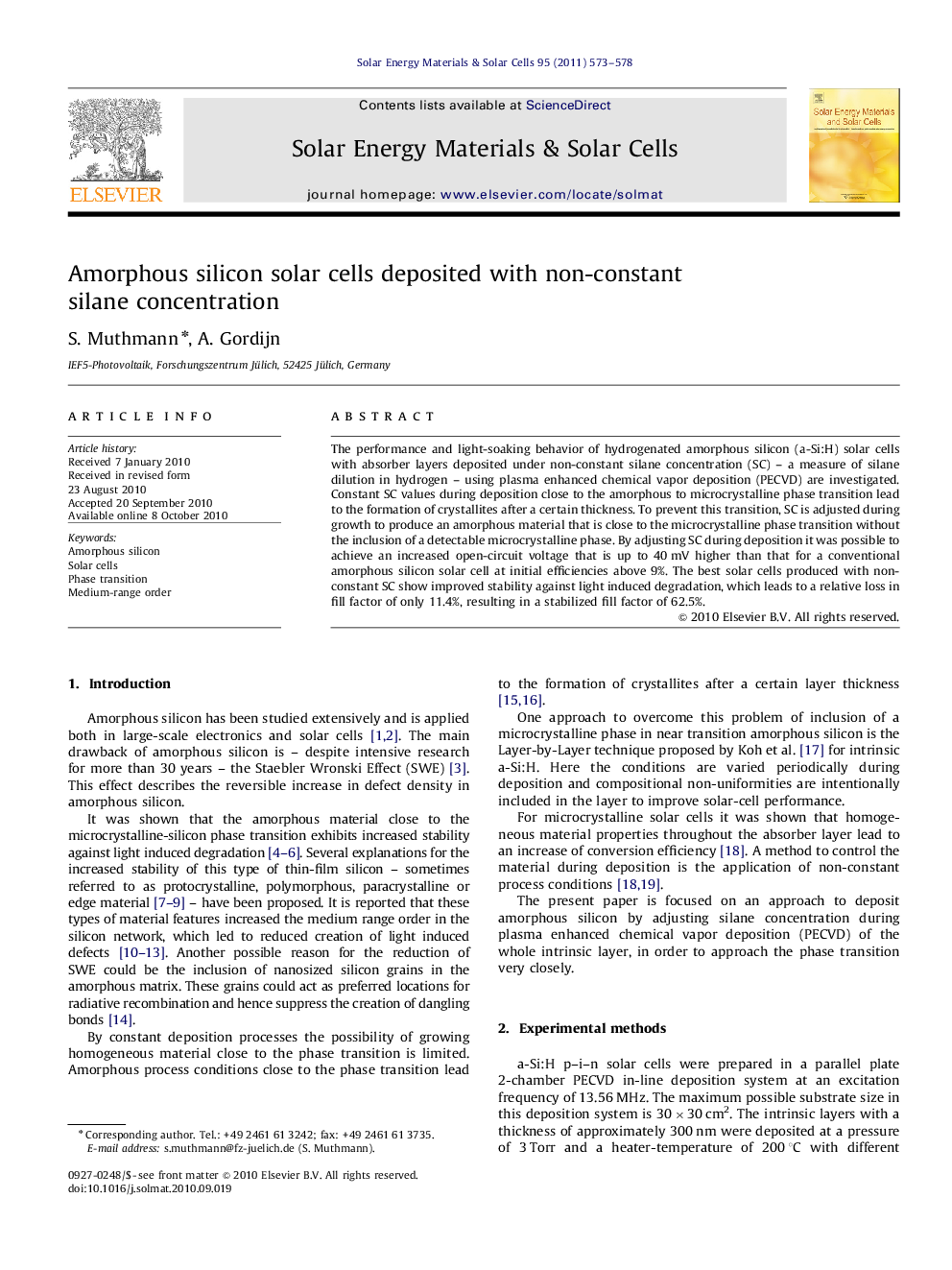| Article ID | Journal | Published Year | Pages | File Type |
|---|---|---|---|---|
| 79223 | Solar Energy Materials and Solar Cells | 2011 | 6 Pages |
The performance and light-soaking behavior of hydrogenated amorphous silicon (a-Si:H) solar cells with absorber layers deposited under non-constant silane concentration (SC) – a measure of silane dilution in hydrogen – using plasma enhanced chemical vapor deposition (PECVD) are investigated. Constant SC values during deposition close to the amorphous to microcrystalline phase transition lead to the formation of crystallites after a certain thickness. To prevent this transition, SC is adjusted during growth to produce an amorphous material that is close to the microcrystalline phase transition without the inclusion of a detectable microcrystalline phase. By adjusting SC during deposition it was possible to achieve an increased open-circuit voltage that is up to 40 mV higher than that for a conventional amorphous silicon solar cell at initial efficiencies above 9%. The best solar cells produced with non-constant SC show improved stability against light induced degradation, which leads to a relative loss in fill factor of only 11.4%, resulting in a stabilized fill factor of 62.5%.
